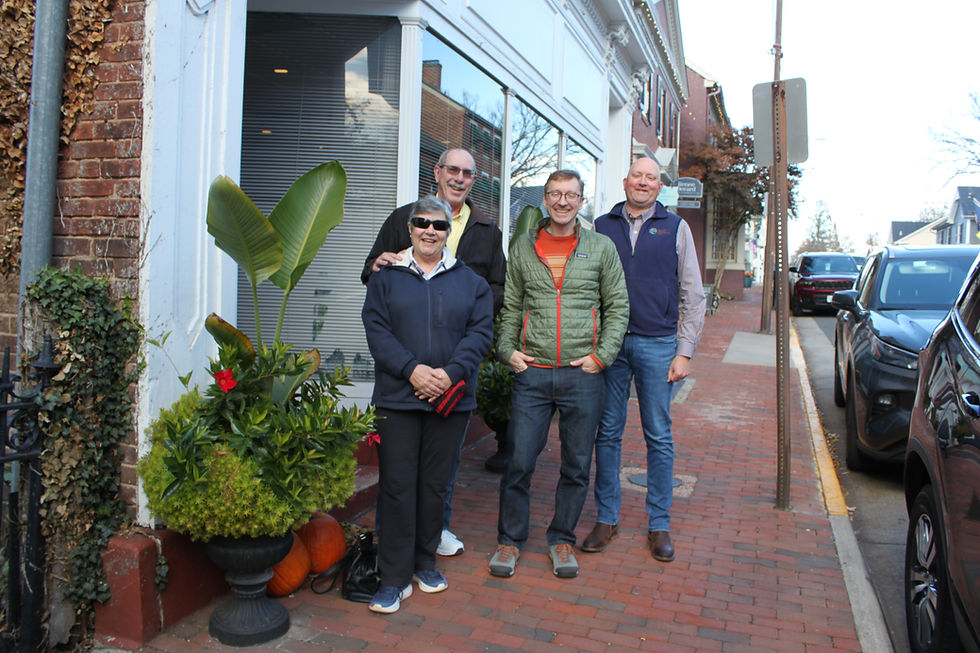Conservation Conversations with Maria Izzi
- NVCT
- Aug 20, 2021
- 3 min read

Meet Maria Izzi, a rising freshman ready to attend Duke University in the fall. As part of their DukeEngage pre-college program, Maria volunteered with us, helping to improve the use, storage, and transfer of essential GIS data that will assist us in our mission to protect Northern Virginia's lands and waters. In this Q&A, Maria details how her work impacts our approach to safeguarding nature.
Q: Maria, you have a unique skill set that positively impacts the work we do. Could you share with me which of your skills you found most helpful during this internship opportunity?
I think the work that I did that most benefited NVCT was primarily a result of my coding skills. Not only did it help me with the actual process of coding, but it is what allowed me to even realize which repetitive, labor-intensive actions could be automated.
Q: I understand you had to update sets of data to improve and simplify file transfer and use. In plain terms, how does this help our organization work more efficiently?
It saved the time that would have been spent fact-checking all the data to ensure that it was still up-to-date. I downloaded updated datasets from each of our counties, so that when NVCT creates tools that help decide which areas need to be prioritized for conservation, the data being used is as recent and thus accurate as possible.
Q: How does a land conservation's strategic conservation plan (SCP), built with tools and datasets that you work with, help detect specific regions, landowners, and parcels to maximize its efforts to conserve land?
The SCP helps NVCT become more proactive in the approach to finding lands to conserve. It is a data-based model that uses a variety of factors to score the priority of each parcel of land. Some of those factors include proximity to highways, proximity to other already conserved parcels, tree cover, etc. These factors are then grouped into categories, and each category is given a weighting based on its relative importance. The score is calculated by summarizing those weights, so the final score value of each parcel is representative of its priority.
Q: Technologically competent people like yourself are often most thrilled by how their work impacts the rest of us. Was there a point where you were shocked by how your efforts could positively impact the land and water protection?
I think that most of the work I did was indirectly making things more efficient, so when I realized that I was saving some people hours of work, my work felt impactful. In the more general field of conservation, I think looking at the physical maps change as I adjusted the numbers helped me realize what that meant for the long-term goals of the NVCT.
Q: You had the opportunity to work with a few NVCT staff members who believe you to be extremely bright and talented. How was your experience, and though you worked remotely, did you feel your work contributed to the collective effort?
I thought the interactions with other NVCT staff members were set up well and gave me a good balance. I was given a general direction, but I still had a lot of independence with how I wanted to get things done and adding additional tasks that I thought could be helpful. Toward the end, when all my projects started coming to a close, I could really see how it all came together and contributed to the overall effort.
Q: In our final zoom staff meeting, you got to hear what everyone was working on, and you expressed that it was exciting hearing what everyone else did for the organization. Is there any specific area you wish you could’ve seen or heard more of if you were not working remotely?
I think it would have been interesting to just be in the room with everyone and hear things as they happened. I was specifically also interested in hearing about the actual customer interactions, what a conservation easement actually looks like, and what it means in a legal sense. I did enjoy working remotely, too, though, especially since it allowed me to have a lot more work flexibility.








Comments